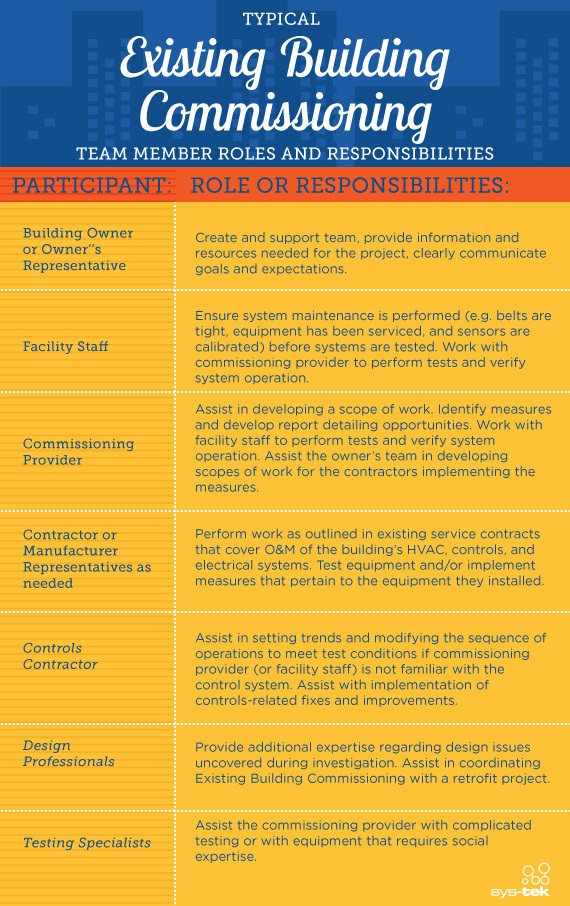Retro Commissioning: Diagnostic Monitoring and Functional Testing
Oct 09, 2013
During a Retro-Commissioning project, the commissioning provider will perform a series of diagnostic monitoring and functional testing to identify any existing problems and to determine where opportunities lie from an energy- and cost-savings standpoint.

Diagnostic monitoring usually involves the analysis of readings taken from the building’s energy management control system or portable data loggers. After diagnostic monitoring has been performed, the commissioning provider will conduct functional testing to observe and measure the performance of certain equipment and systems, which can help identify the cause of certain problems uncovered by diagnostic monitoring.
Diagnostic monitoring process
During the diagnostic monitoring process, a commissioning provider and team will collect the following variables for a building:
- Total energy consumption, including use of gas, steam, and water
- Operating parameters such as temperatures, pressures, and flow rates
- Outdoor temperatures and humidity
- Equipment status and runtime information
- Setpoints
After these variables have been collected, the commissioning provider will analyze trends for these readings on the hourly, daily, weekly, and monthly levels to determine whether certain systems are working efficiently. After the provider has pinpointed potential problem areas, the data is shared with the building staff so they can better understand how systems should be operating versus how they are currently working.
Functional testing phase
The functional testing phase requires commissioning providers to find certain problem areas through careful observation, measurement, and recording processes.
To help the commissioning provider throughout the functional testing phase, building staff will help prepare for tests, manipulate the systems to accommodate testing, and be responsible for returning systems back to their normal states following testing.
Prior to any complex functional tests, the commissioning provider will create a test protocol that outlines how the test will be carried out and contains the following:
- Purpose of the test
- Testing prerequisites
- Instructions for carrying out the test
- Detailed steps and procedures for testing
- Detailed procedure for documentation
- Procedure for returning systems to normal state
- Equipment required for testing
- Type of analysis required
- Acceptance criteria
- Required approvals and sign-offs
After the test protocol has been developed, the commissioning provider will meet with the building staff to set up a testing schedule so all parties can be present to participate in the test. The commissioning provider and building staff will then work together in carrying out all tests and documenting the outcomes and all associated data.
To achieve the best results from diagnostic monitoring and functional testing for Retro-Commissioning projects that must be completed within a limited time frame, commissioning providers can practice the following strategies:
- Plan the investigation during a season or time of year during which the most system and equipment problems occur in an effort to help easily identify major problems.
- Interview members of the building staff about major problems and opportunities during an alternate season from which the actual investigation takes place to help identify improvements.
- Conduct deferred testing in seasons opposite from those in which cooling and heating problems are experienced to help identify root causes of certain extreme problems.
sys-tek can help building owners identify equipment, systems, and energy-efficiency problems during the Retro-Commissioning investigation phase. Contact sys-tek today to learn more about how we can help improve your building’s efficiency to result in significant energy and cost savings.
You may be interested in these other posts:

10 Signs Your Building May Need Existing Building Commissioning
If your building is exhibiting any of these key signs, you may be able to improve energy efficiency and reduce costs through EBCx.








